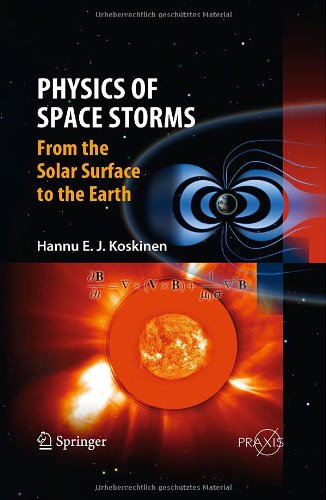

Most ebook files are in PDF format, so you can easily read them using various software such as Foxit Reader or directly on the Google Chrome browser.
Some ebook files are released by publishers in other formats such as .awz, .mobi, .epub, .fb2, etc. You may need to install specific software to read these formats on mobile/PC, such as Calibre.
Please read the tutorial at this link: https://ebookbell.com/faq
We offer FREE conversion to the popular formats you request; however, this may take some time. Therefore, right after payment, please email us, and we will try to provide the service as quickly as possible.
For some exceptional file formats or broken links (if any), please refrain from opening any disputes. Instead, email us first, and we will try to assist within a maximum of 6 hours.
EbookBell Team

0.0
0 reviewsThis unique, authoritative book introduces and accurately depicts the current state-of-the-art in the field of space storms. Professor Koskinen, a renowned expert in the field, takes the basic understanding of the system, together with the physics of space plasmas, and produces a treatment of space storms. He combines a solid base describing space physics phenomena with a rigorous theoretical basis. The topics range from the storms in the solar atmosphere through the solar wind, magnetosphere, and ionosphere to the production of the storm-related geoelectric field on the ground. The most up-to-date information available is presented in a clear, analytical and quantitative way. The book is divided into three parts. Part 1 is a phenomenological introduction to space weather from the Sun to the Earth. Part 2 comprehensively presents the fundamental concepts of space plasma physics. It consists of discussions of fundamental concepts of space plasma physics, starting from underlying electrodynamics and statistical physics of charged particles and continuing to single particle motion inhomogeneous electromagnetic fields, waves in cold plasma approximation, Vlasov theory, magnetohydrodynamics, instabilities in space plasmas, reconnection and dynamo. Part3 bridges the gap between the fundamental plasma physics and research level physics of space storms. This part discusses radiation and scattering processes, transport and diffusion, shocks and shock acceleration, storms on the Sun, in the magnetosphere, the coupling to the atmosphere and ground. The book is concluded with a brief review of what is known of space storms on other planets. One tool of building this bridge is extensive cross-referencing between the various chapters. Exercise problems of varying difficulty are embedded within the main body of text.